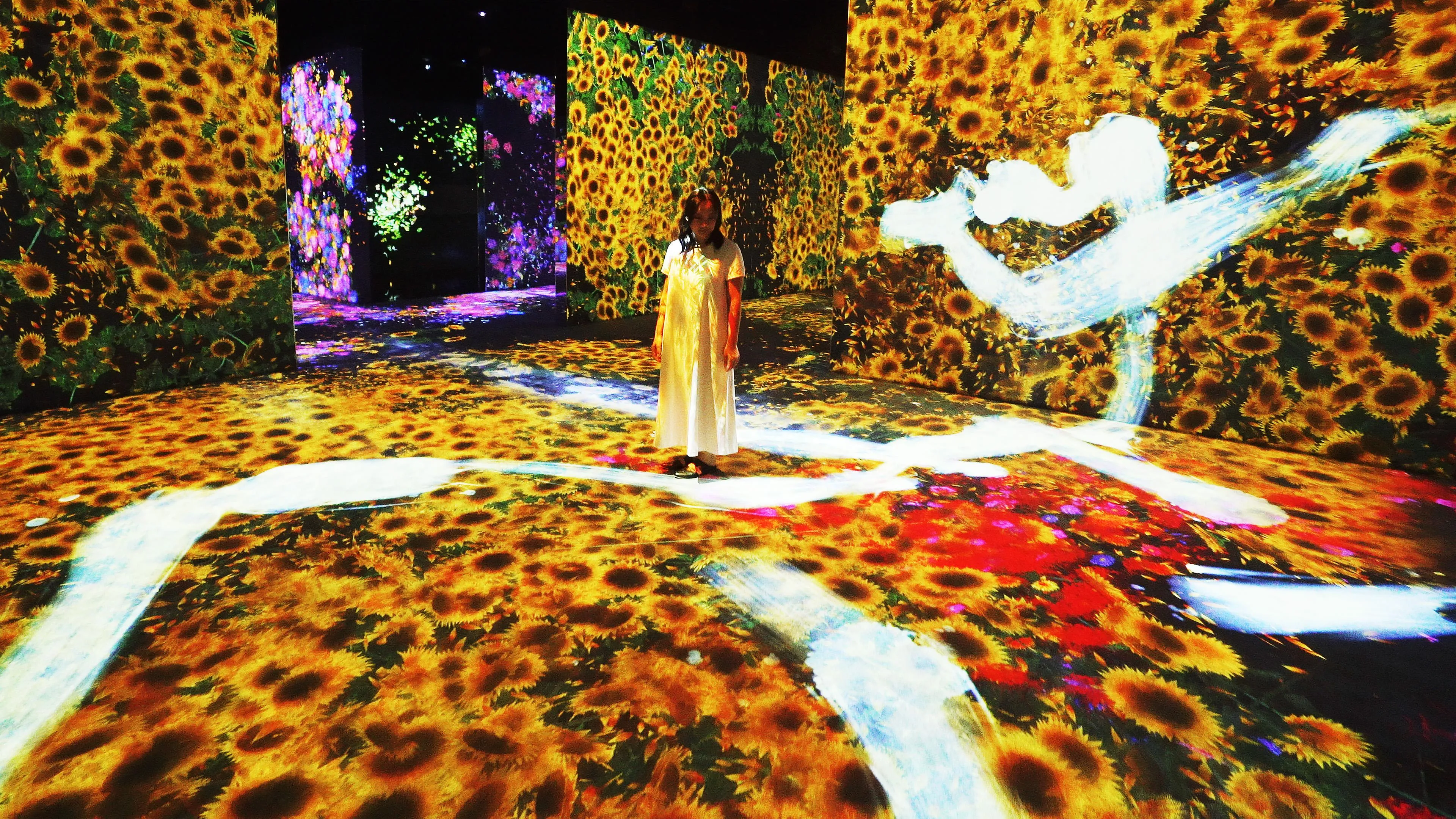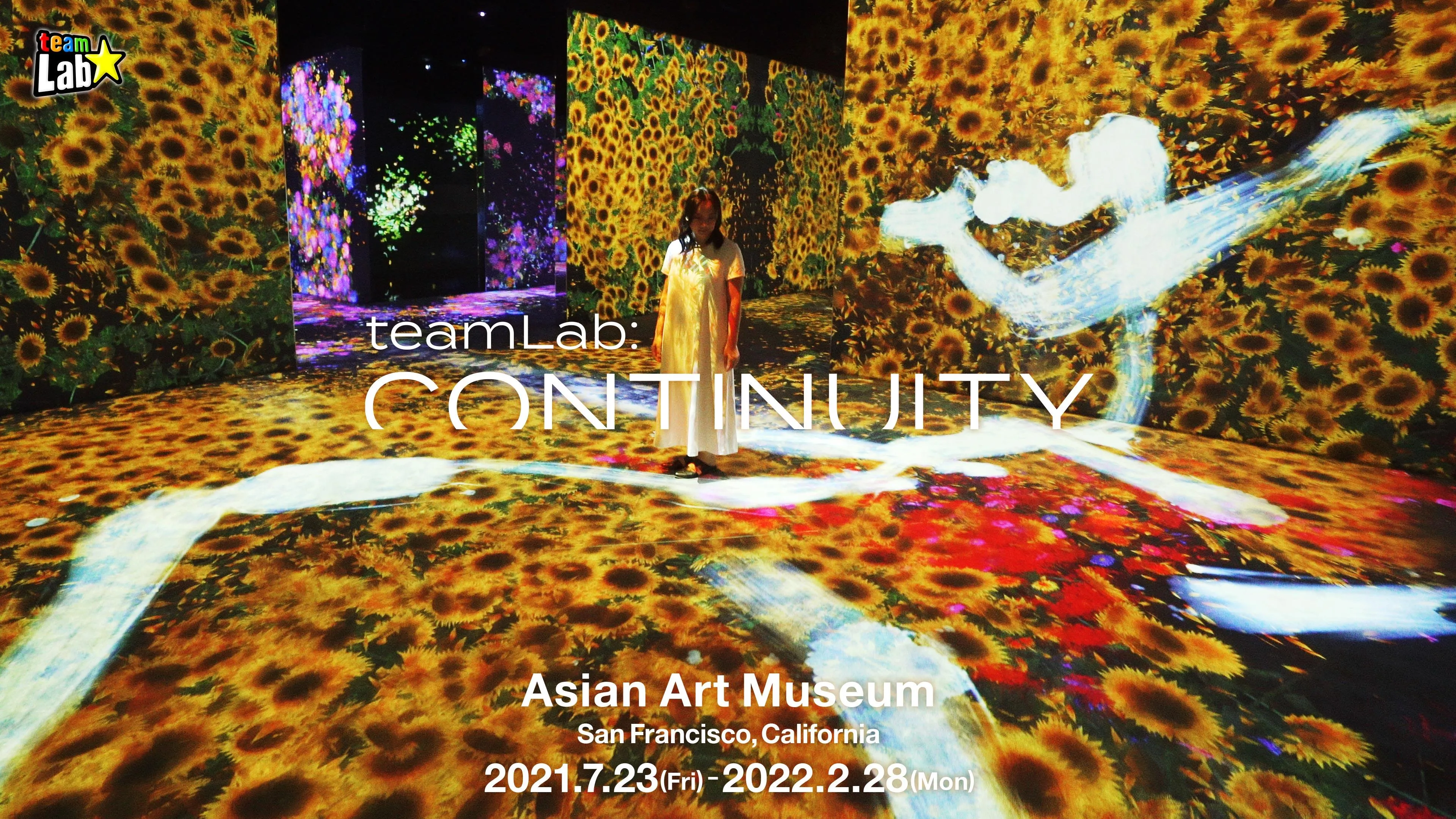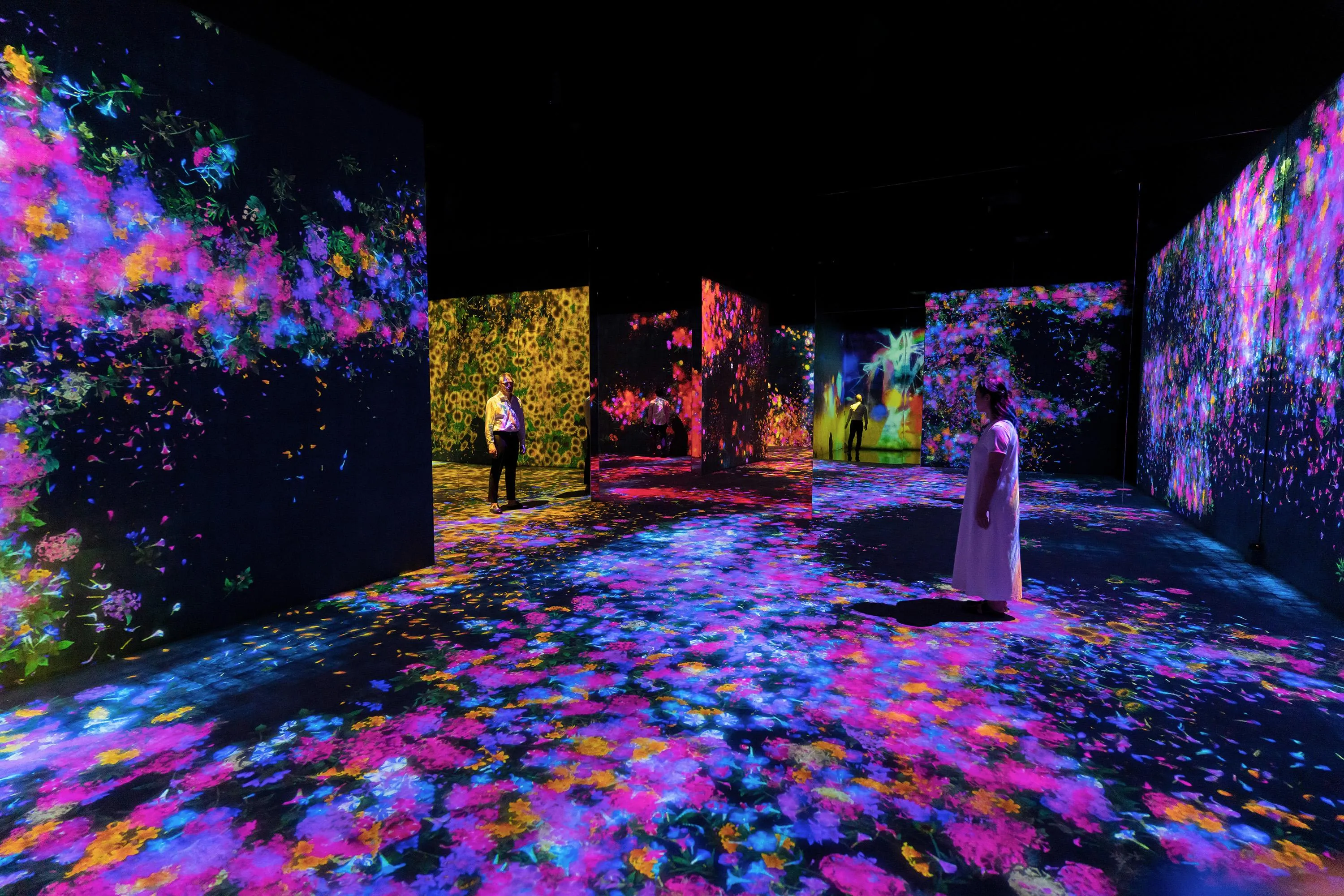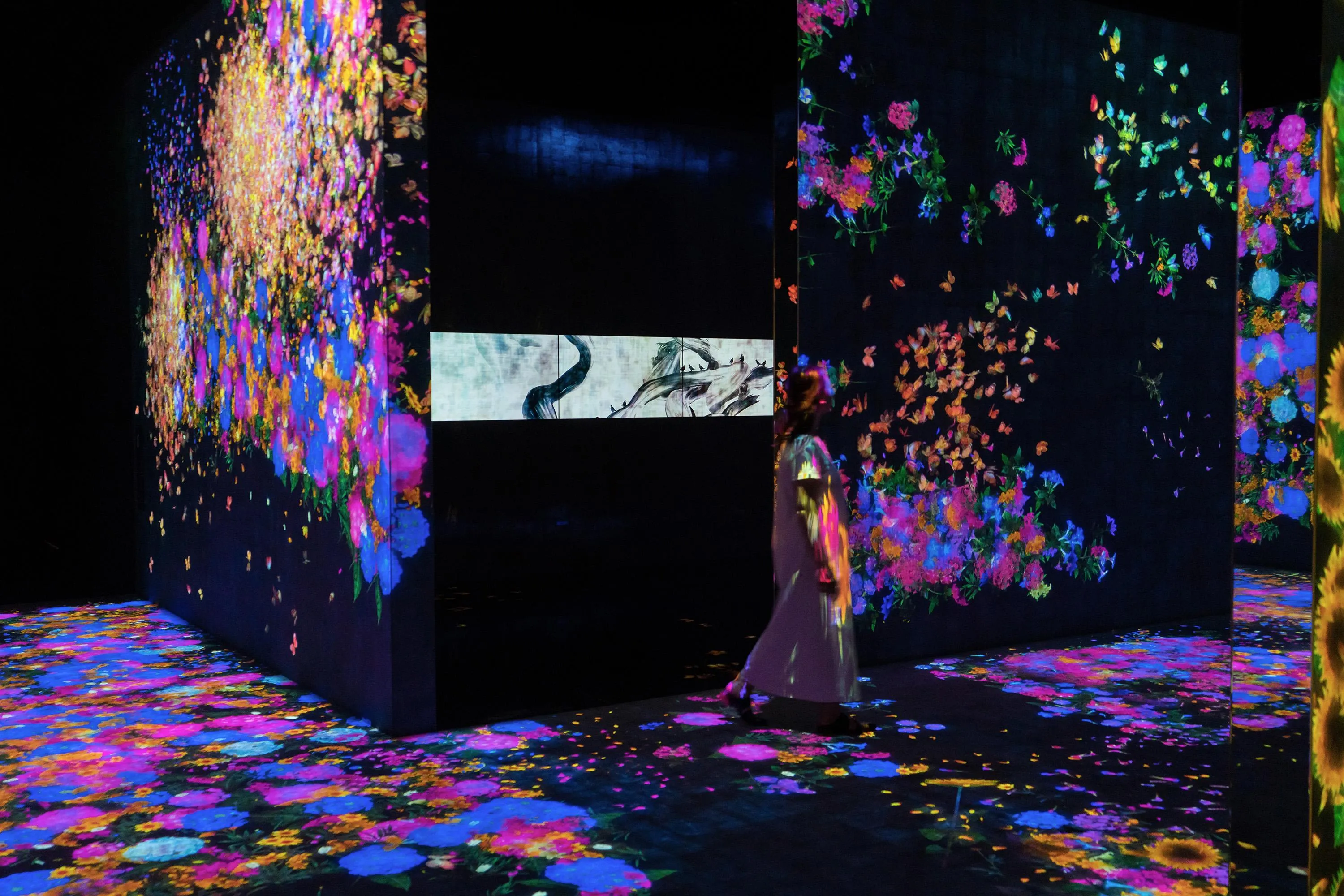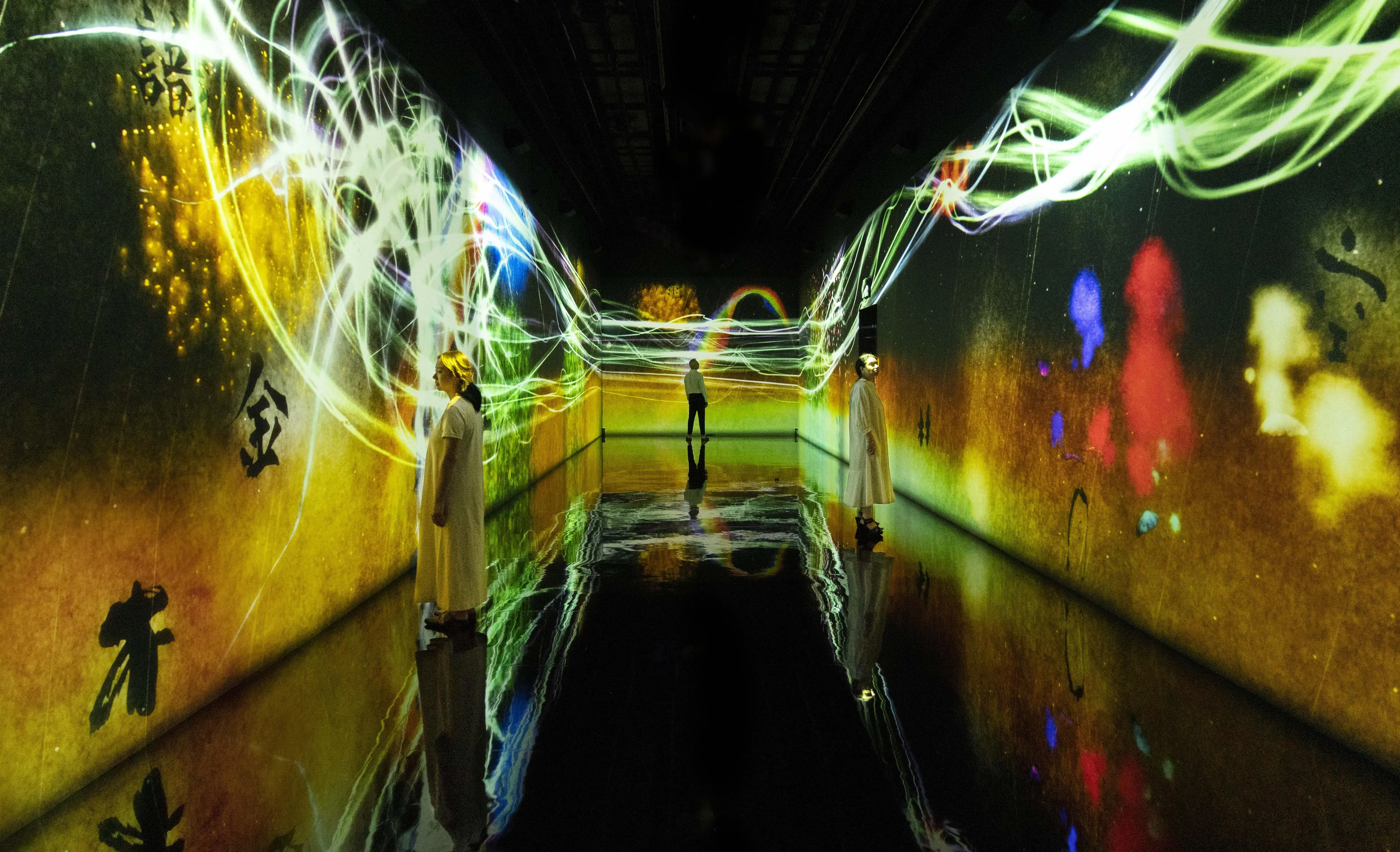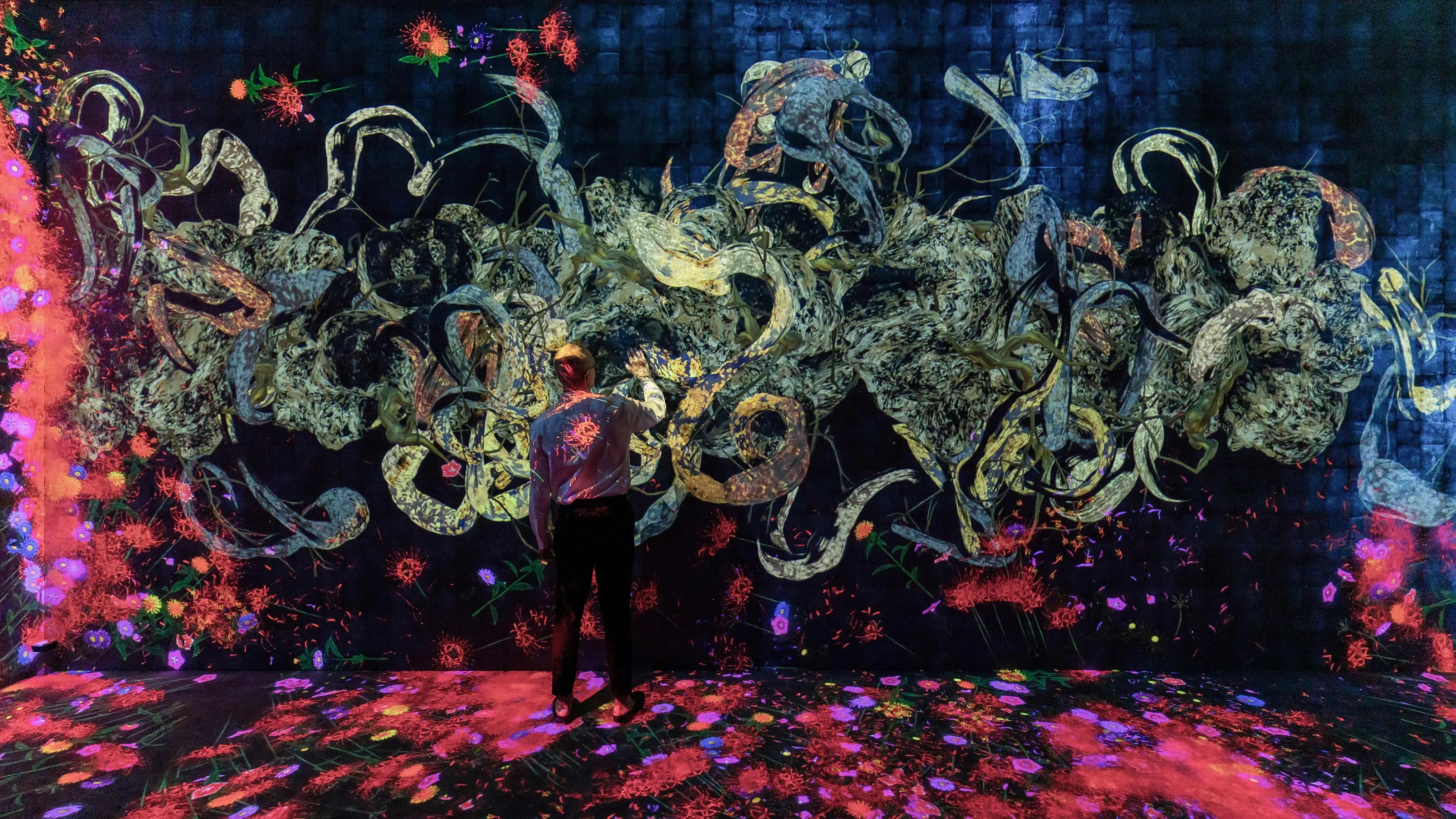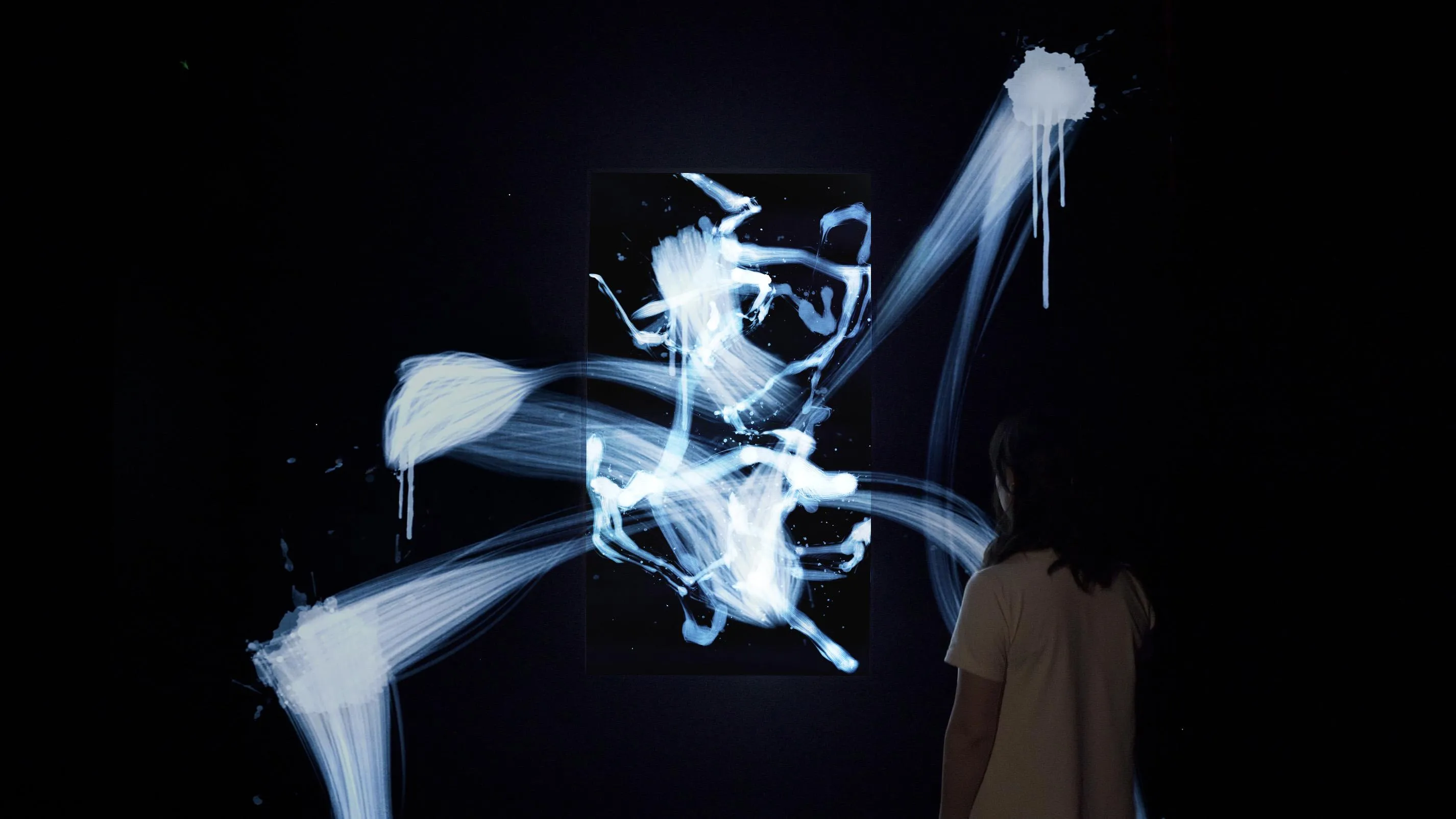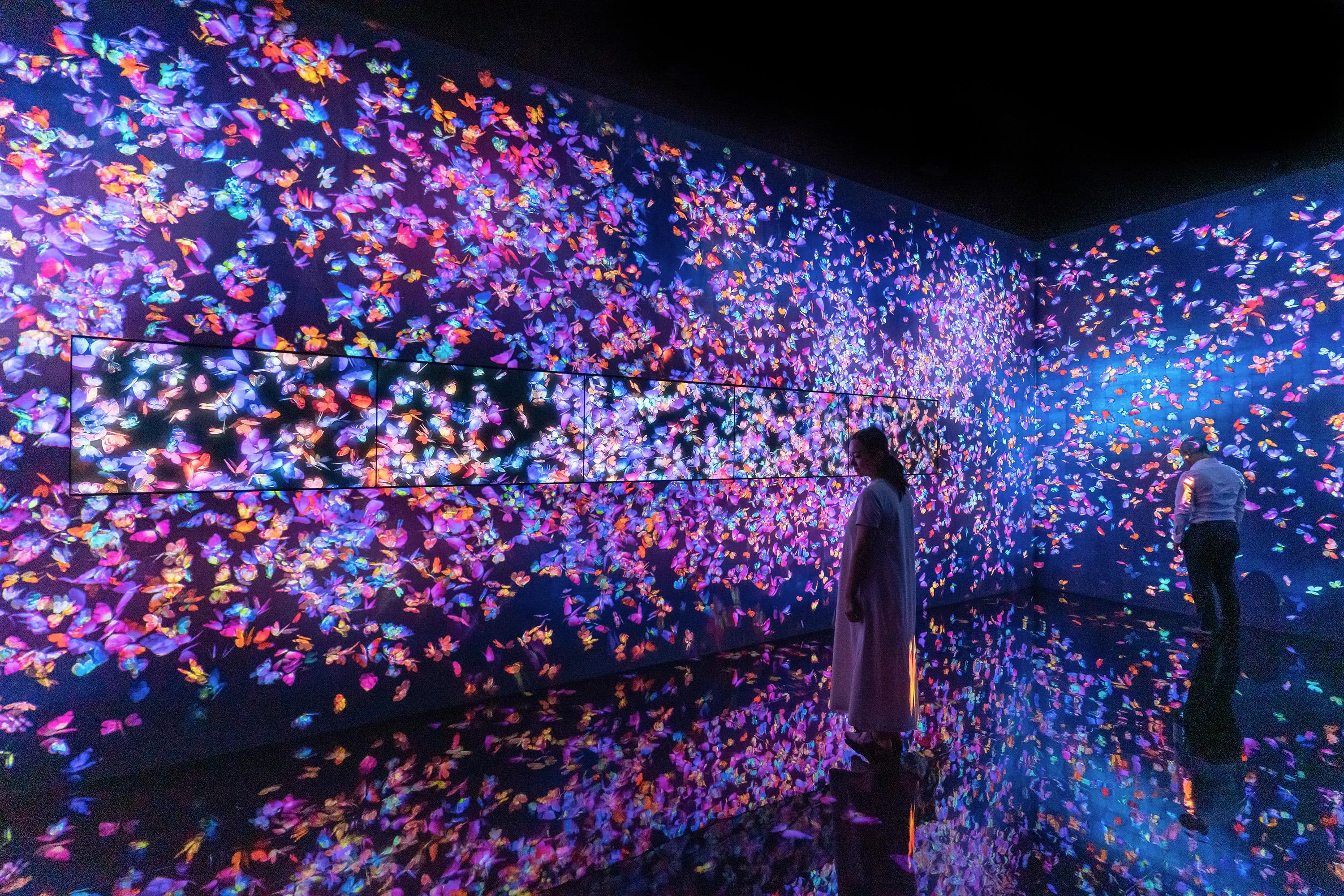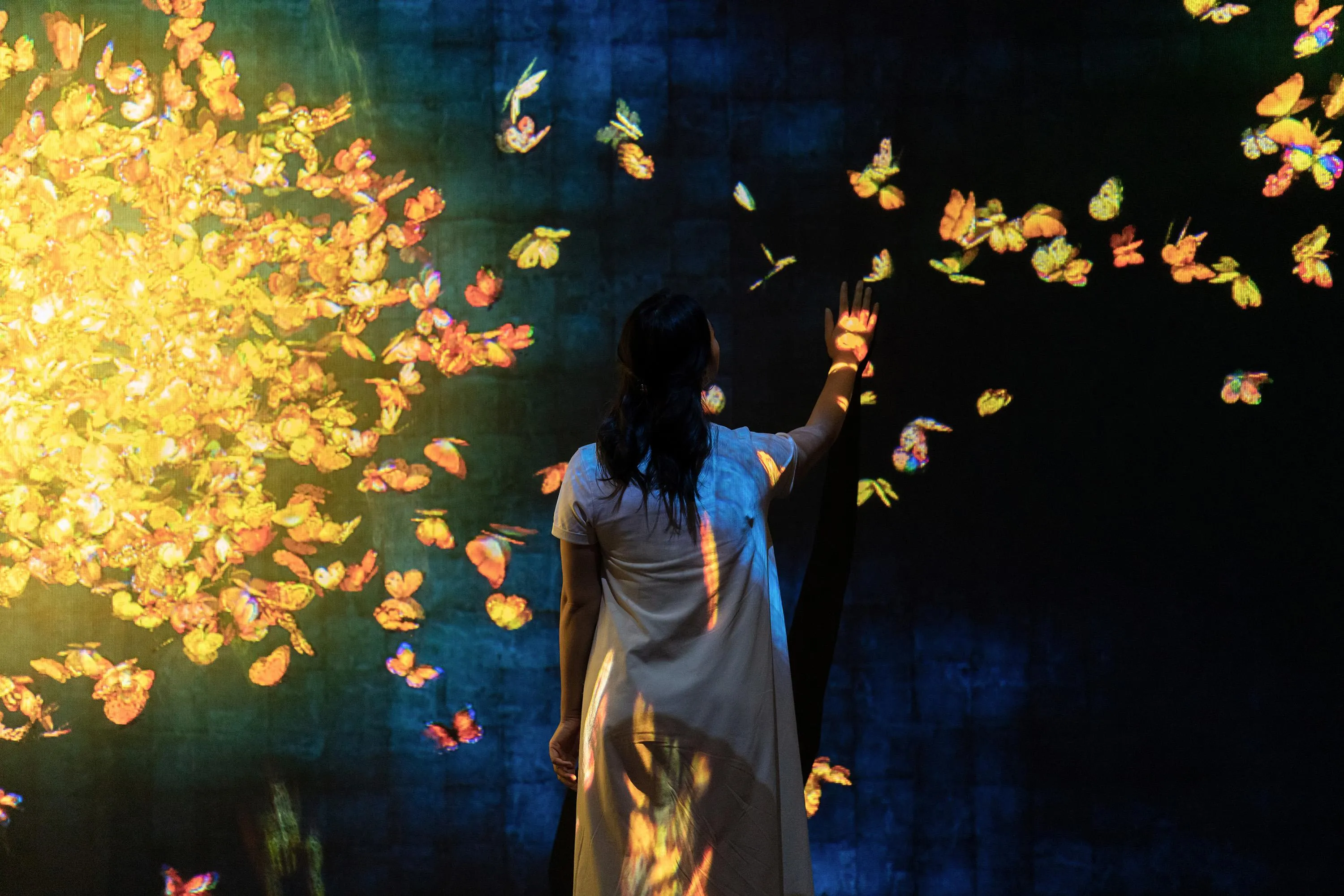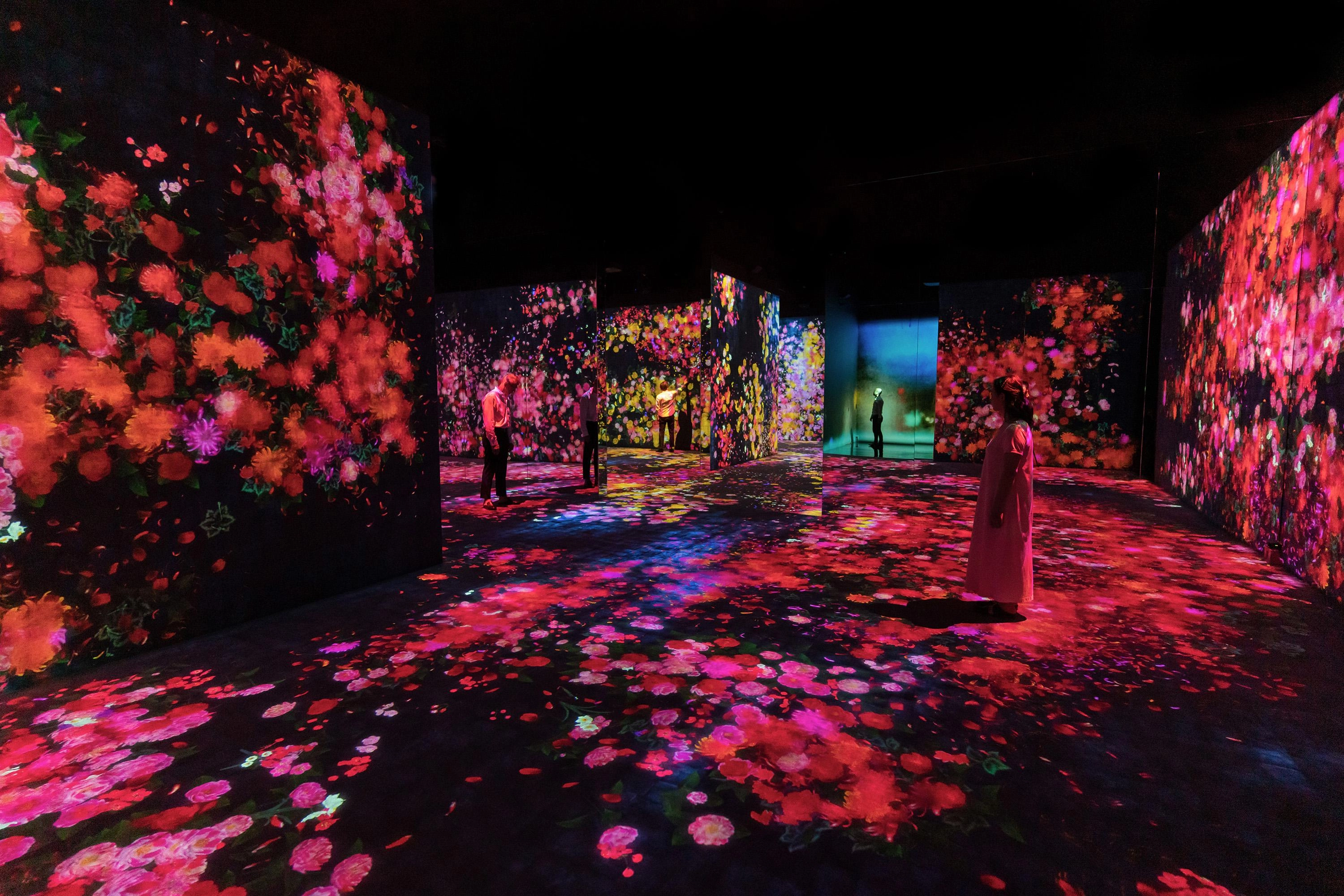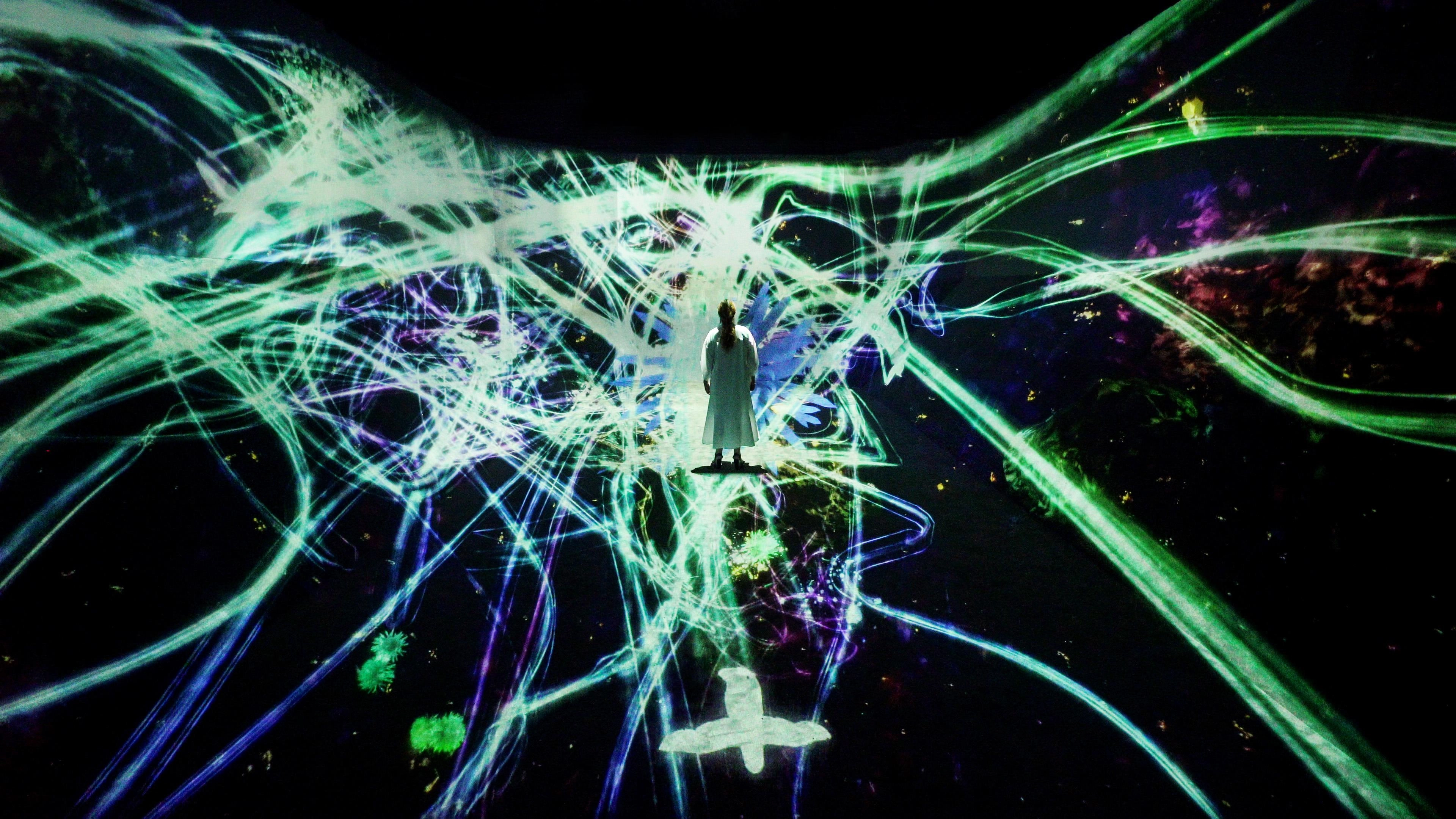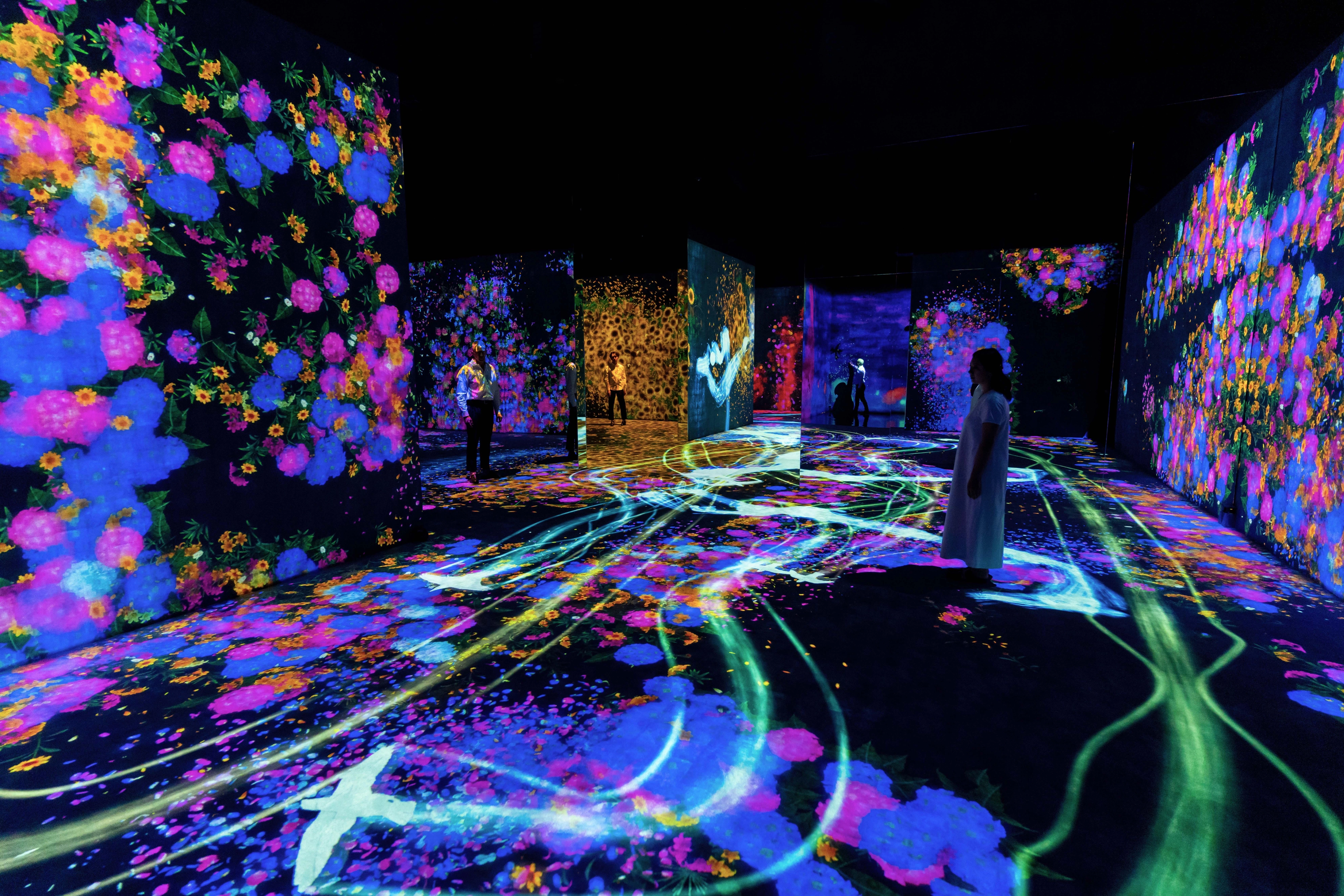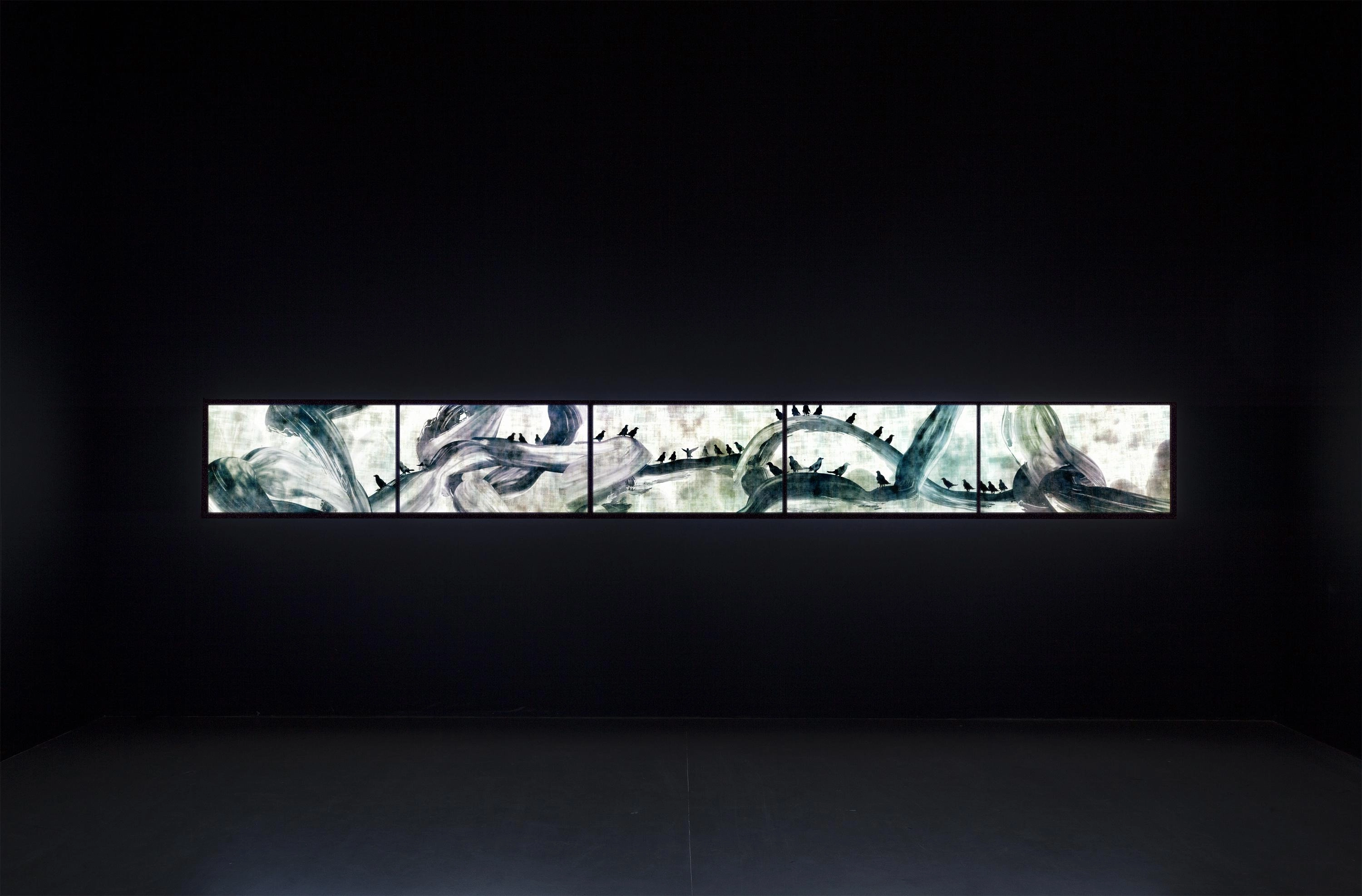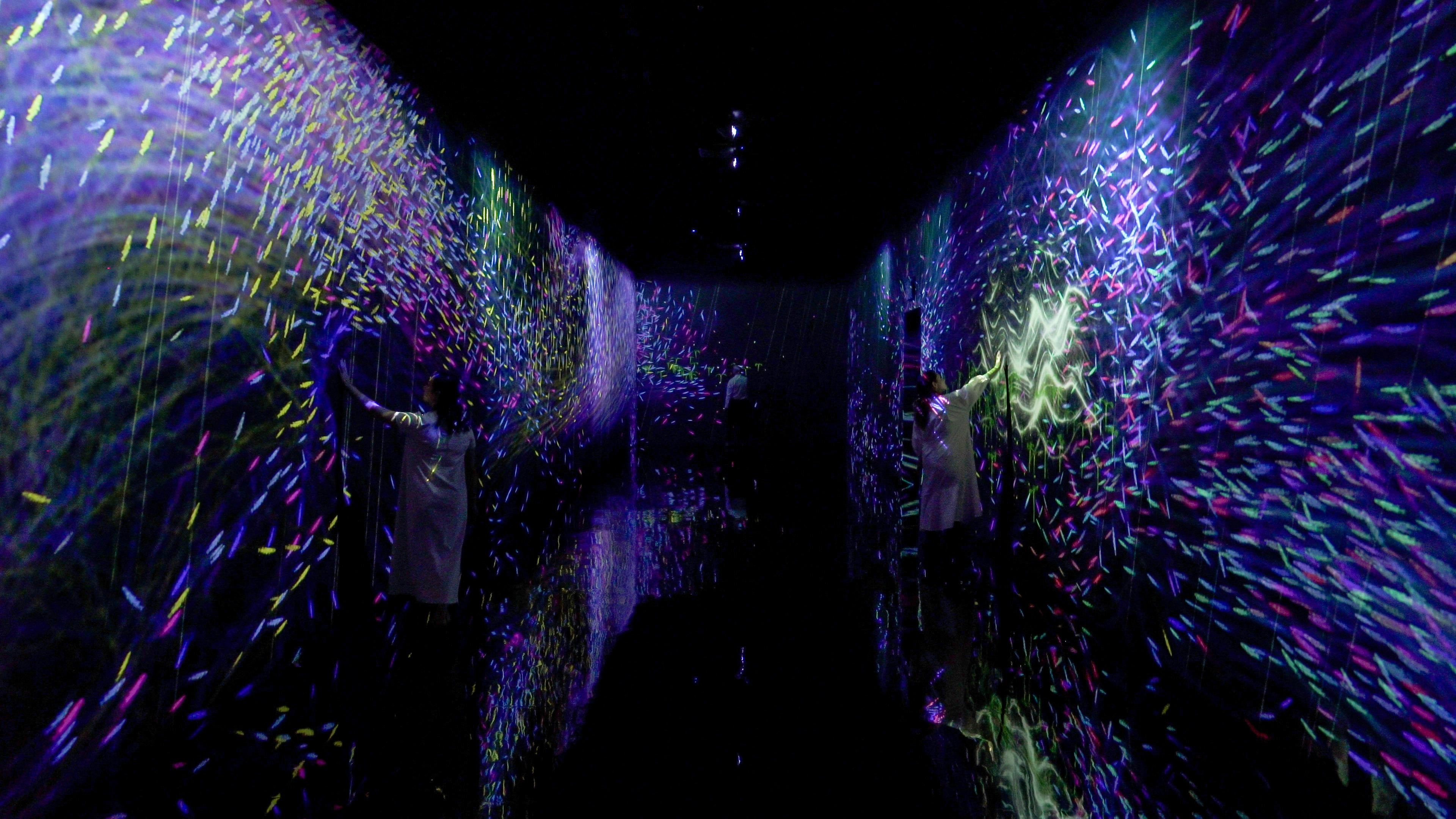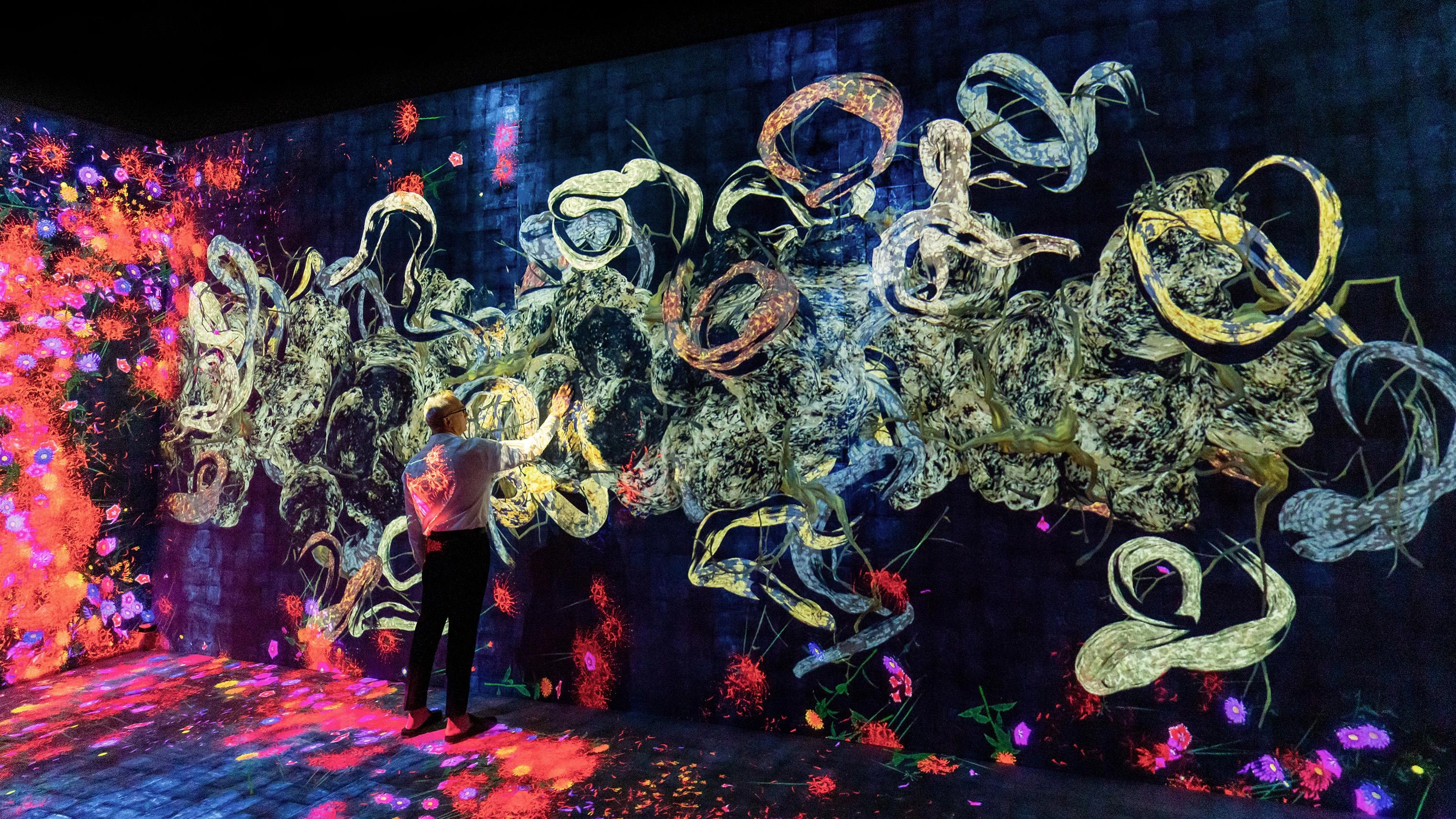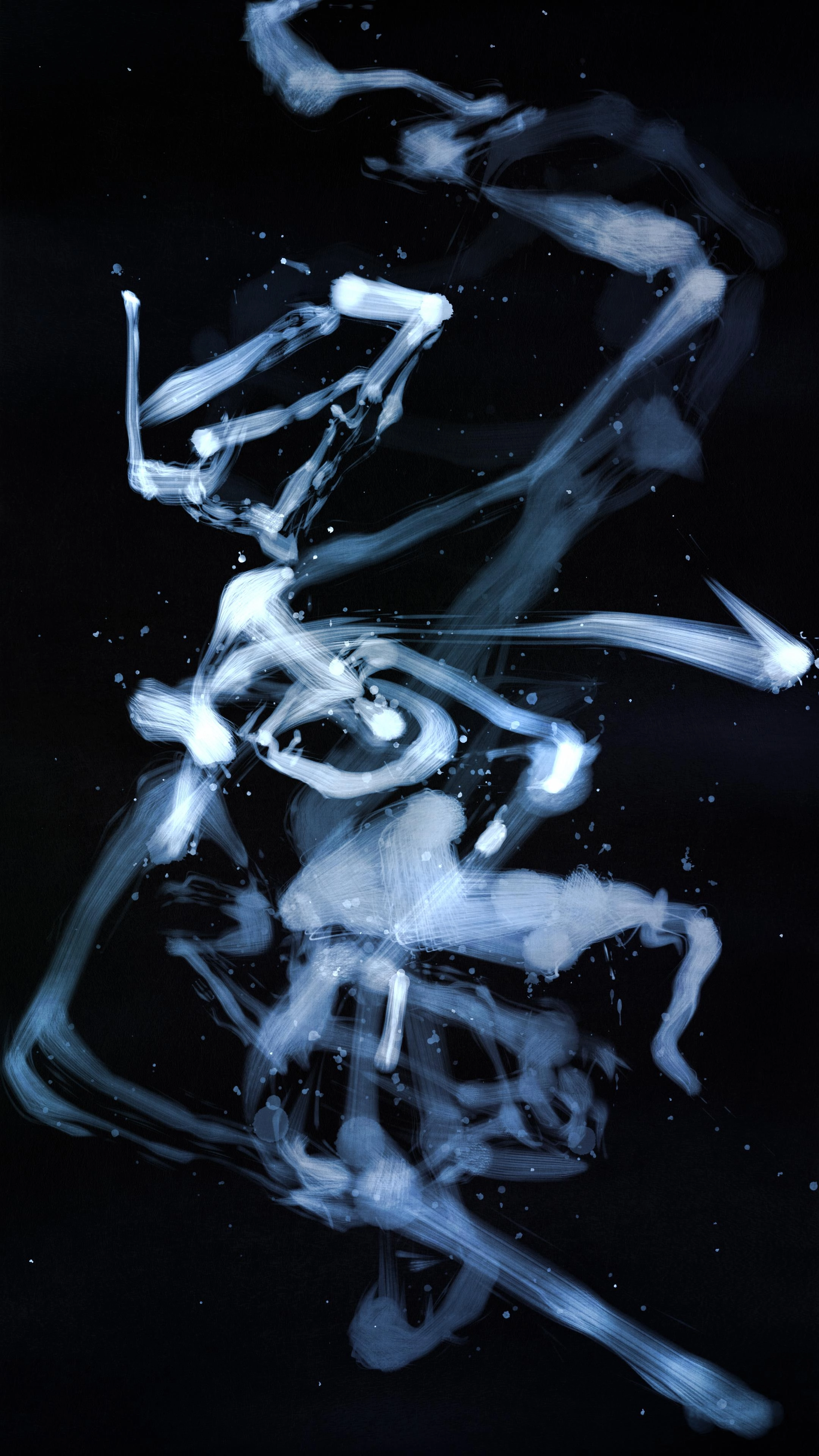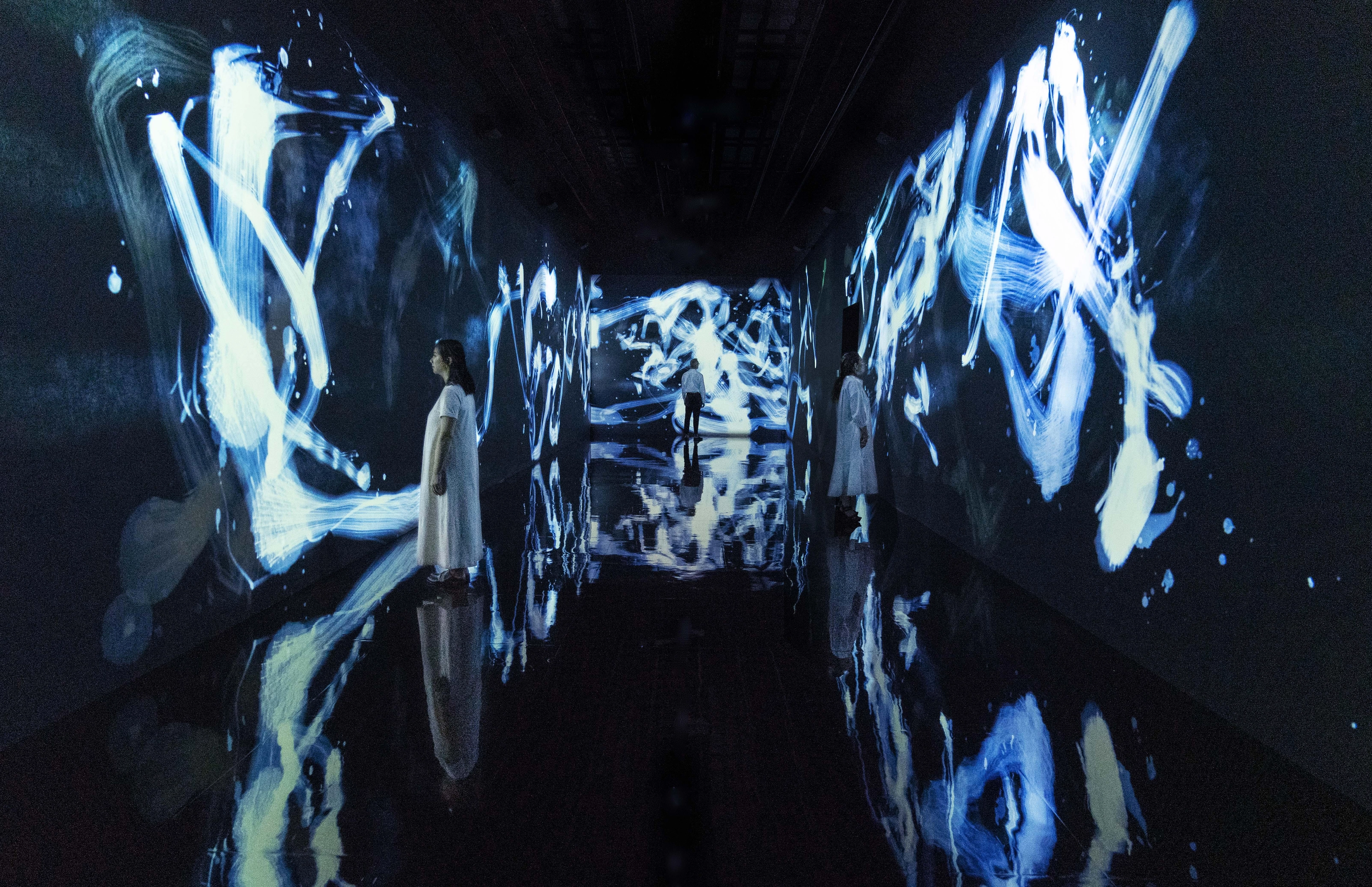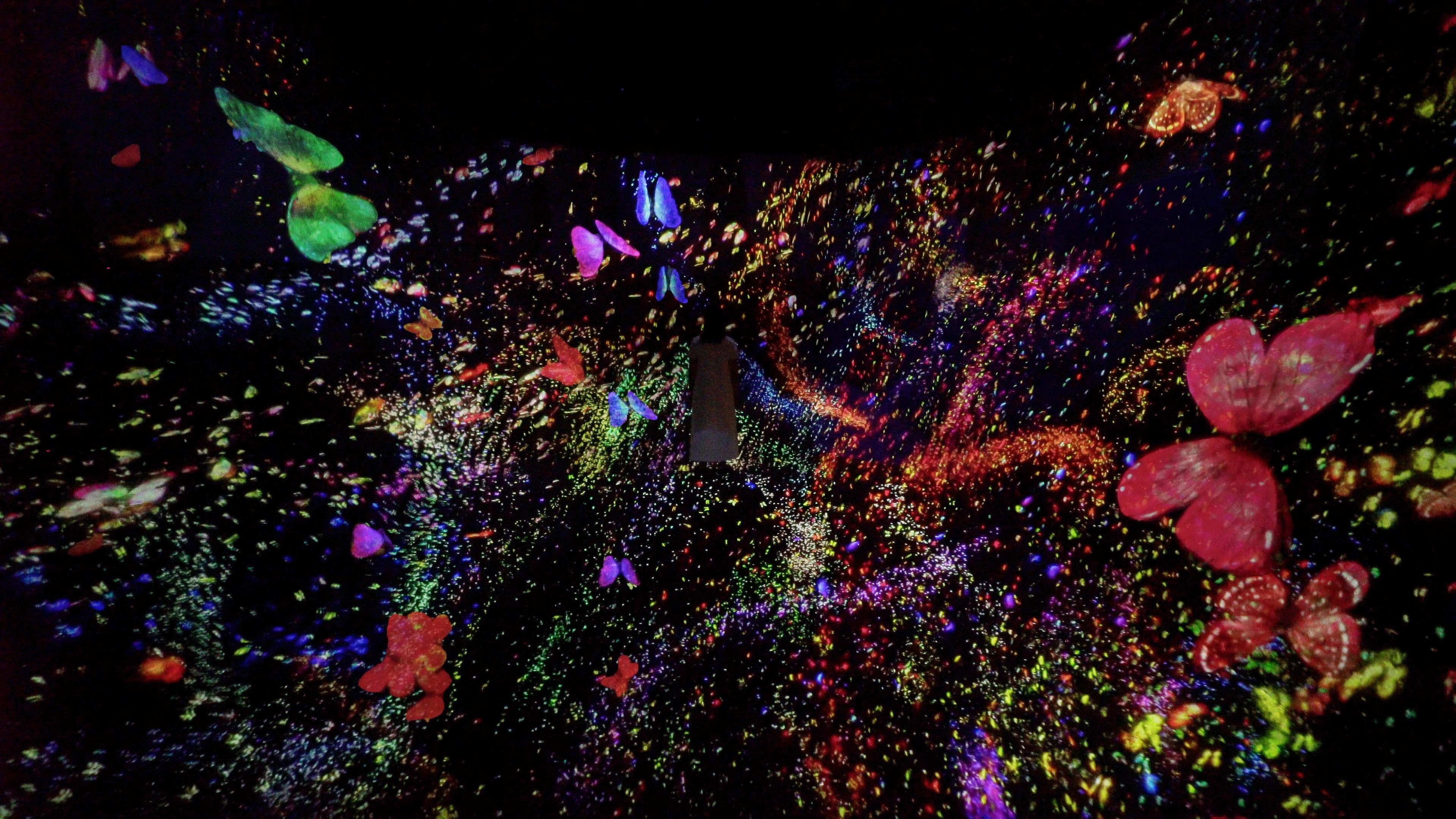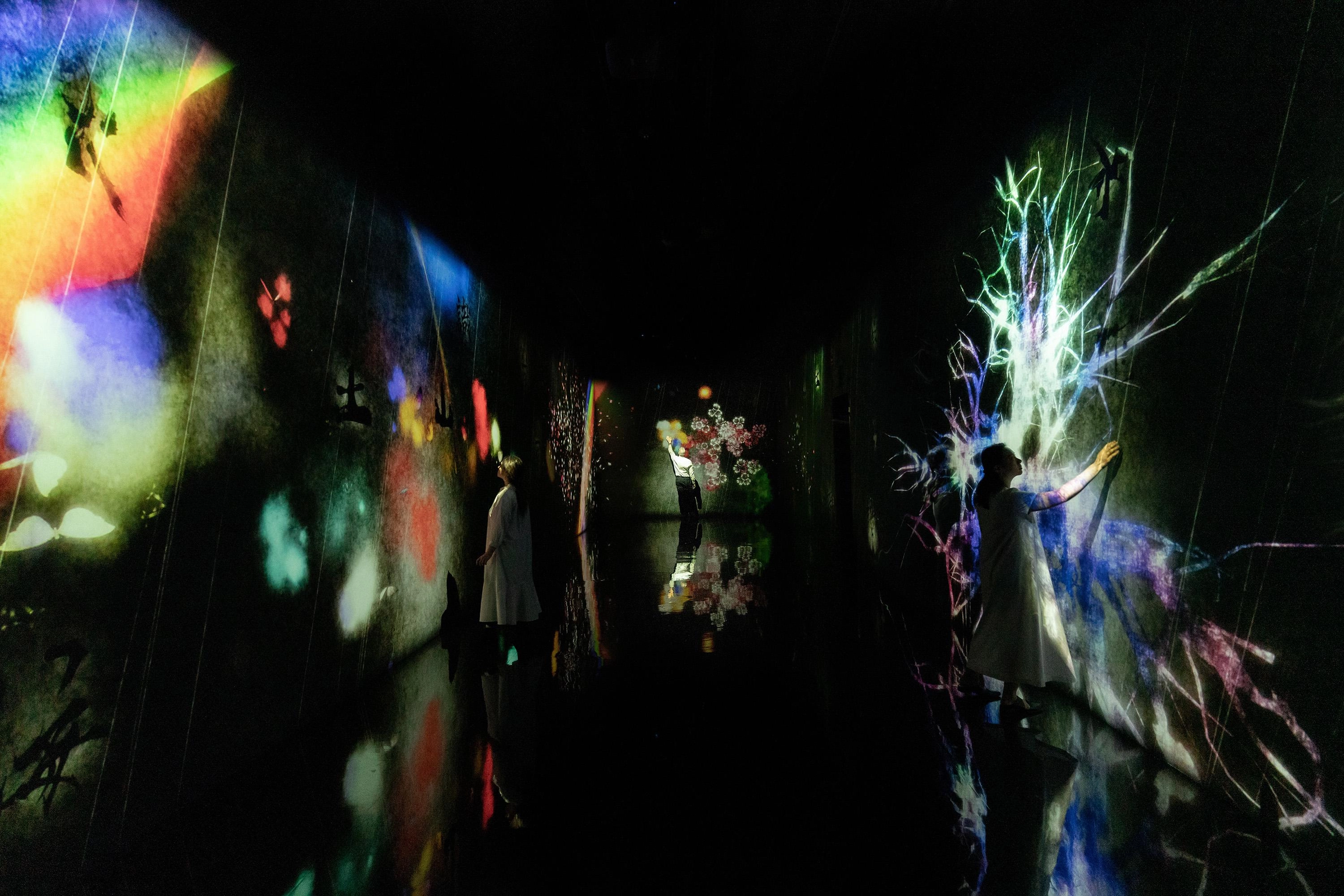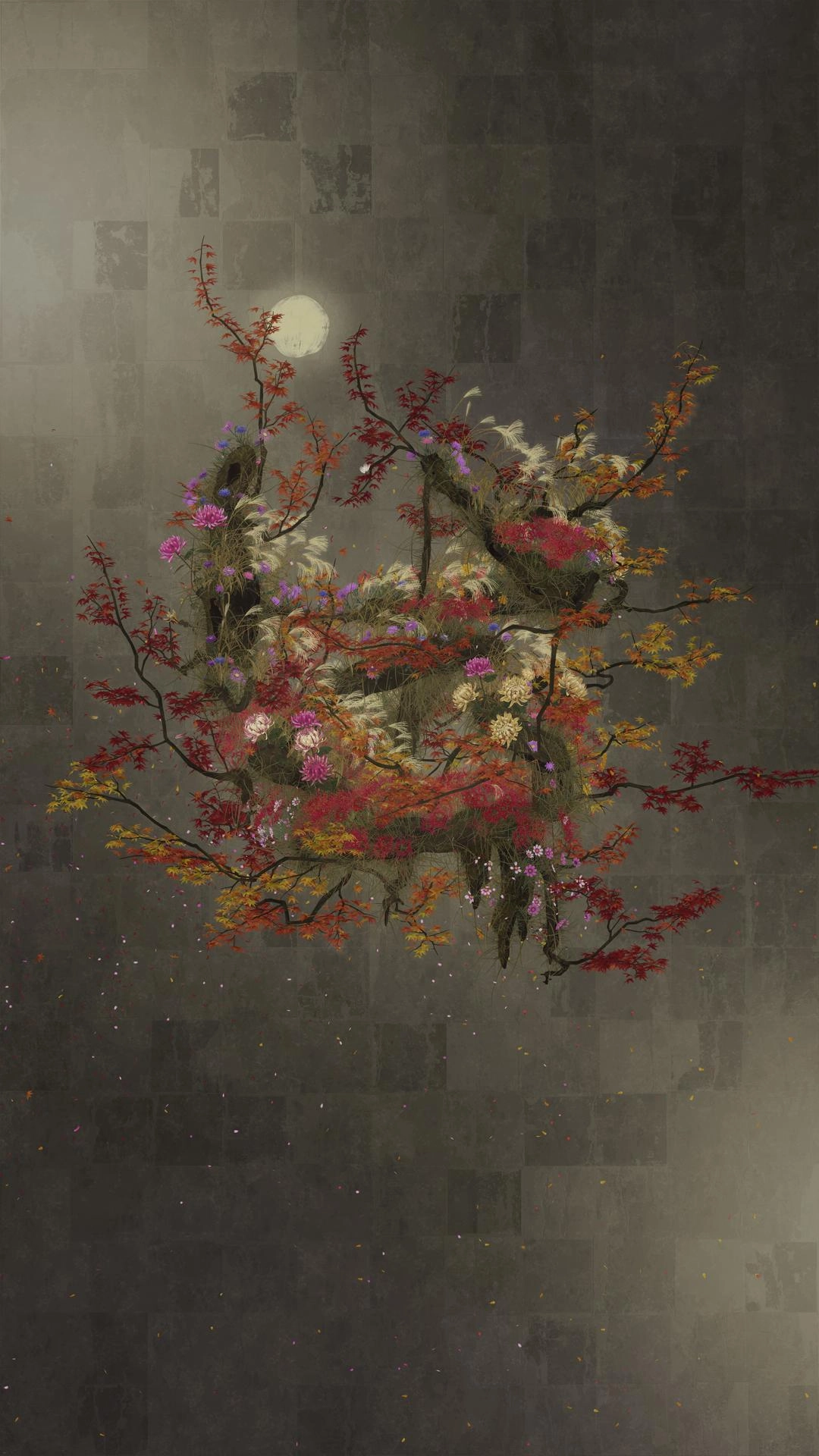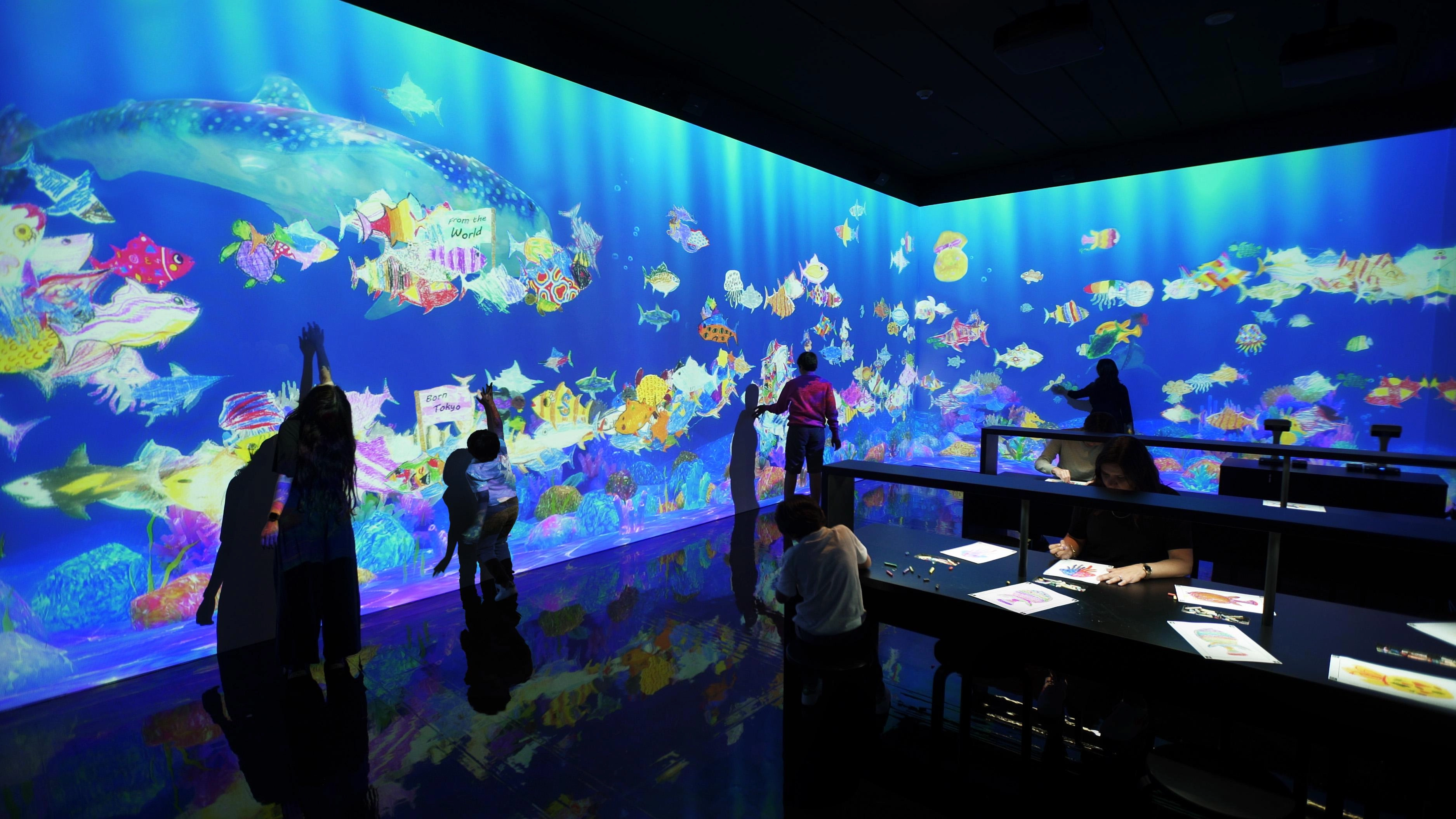"teamLab: Continuity" is a different approach to an art exhibition experience based on teamLab’s core concepts that the digital domain can expand art, and that within the digital domain, art can transcend both physical and conceptual boundaries. Instead of offering a selection of objects plucked from the world around us, presented in clusters or in sequence, it offers a world of dynamic artworks without distinct boundaries, and without a map. The interactive digital installations are neither a prerecorded animation nor on a loop—the work is rendered in real time. The interaction between the viewer and the installation causes continuous change in the artwork; previous visual states can never be replicated and will never reoccur. Artworks fly beyond borders, expand, influence, and sometimes intermingle with each other.
Exhibitions have played many roles over past centuries, often looking at objects as ways of understanding the world around us. Royal collections assembled things of splendor and fascination. World’s fairs and expositions were organized to showcase modern technologies alongside art and culture. These modes of display incorporate power dynamics, as do the practices of today’s museums. The exclusivity of the curated subjects or objects, the rarefied nature of the experience, and the politics of who collects what and when are all still present in the exhibitions we attend today.
Contemporary museums often require visitors to balance their interest in attending the special event that is the temporary art exhibition, a fundamentally social event shared by both friends and strangers, with the desire to contemplate and examine art as a personal, if not solitary, experience. In "teamLab: Continuity", immersive works of art react to each other and to the people in the space, making the presence of others a fundamental and positive part of the experience. Explore with intention, discover, and create a new world with others.
A Collective Future: Exhibitions in the Age of Digital Interactivity
Living in challenging times, when we are confronted daily with the global threat of the climate crisis, the playfulness and wonder of teamLab’s artworks might seem escapist, self-indulgent, or naïve. After spending time in the exhibition, however, it is hard to deny its connection to the real world. Natural life cycles play out and start anew, historical modes of representation are explored and redeployed, and our interdependence with the environment is front and center. The interconnected artworks, governed by dynamic algorithms, are never exactly the same twice, although the various experiences, imagery, and tempos are underpinned by a type of measured continuity. Seamless transitions between experiences, and the interactive quality of the artworks, are based not just on the actions but the presence of the visitors. Thinking back to Imperial collections, world’s fairs, and other pre-digital exhibitions, what is different about this one, realized in the age of digital interactivity and unprecedented connectivity? Is the principle impulse still to better understand the world we live in? Or is it designed to detach the viewer from the real world by offering a creative alternative?
teamLab’s artworks—interpretations of blooming flowers, of strokes of ink, of soaring birds, or of schools of fish—can almost feel like windows into adjacent realms, but they can also serve as mirrors that reflect the world we live in. Each work can be explored in an unstructured way with the option to return, revisit, and re-explore. Rather than passively consuming works of art, viewers are automatically actively involved in sympoiesis—“together-making”—or collective production. Not just an assembly of marvelous things to behold, "teamLab: Continuity" offers a place to reflect on the shared creation of the world we live in—a collective privilege and responsibility as crucial to recognize in spaces dedicated to art and culture as it is in natural ecosystems.
- Karin Oen, Curator, Asian Art Museum of San Francisco
I was born in the countryside in Japan.
During the time that I spent there, I was deeply moved by the scenery I saw in the mountains and was intrigued by how the scenery that was captured on camera was vastly different from the scenery that I had actually experienced. It was difficult for me to conceptualize that the world displayed on a TV screen was continuous with the world that I was physically in, and I learned to question the way people treat the world as though borders exist in the first place.
In 2001, I founded teamLab as a place for collective experimentation by a diverse group of specialists. I realized that when a piece of the world is cut out with a lens, whether through photography or videography, that piece of the world is born on the other side of a screen, and the screen becomes a boundary. When the world is cut out with a lens, a viewpoint is fixed, leaving one to essentially throw away their body. In other words, the reason why we watch TV and movies while sitting down and not walking around is because the lens leads us to do so.
In response, I began to explore the possibility of cutting out space in a way that does not fix a viewpoint like a lens, and does not render the screen to become a boundary. I searched for clues in classical paintings from Japan and other parts of Asia, and used them as a basis to explore and construct a similar logical structure of spatial recognition. I called this logical structure of space, Ultrasubjective Space. Then, we began to create video and interactive artworks using that logical structure.
Unlike lenses and fixed perspectives, the space that is cut out with Ultrasubjective Space in this artwork does not render the screen to become a border, and the artwork’s space is perceived by the viewer as though transcending the display three-dimensionally and existing in the viewer’s space. We believe that through this artwork, the viewer will be able to experience what it means for the artwork space to flow continuously into the space that the viewer’s physical body occupies.
For the viewpoint to be able to shift means that one can view the artwork while walking around freely, and as a result experience the artwork through bodily perception. It allows us to create physically perceived works of art, or in other words, a physical artwork space experienced by walking around.
This world, created by a group of interactive artworks in Ultrasubjective Space, does not create boundaries between the world of the viewer’s physical body and the world of the artworks. The experience is such that your body is in the world of the artworks. In other words, we have been creating physical spatial art that people can experience while walking, with their bodies in an active state.
This exhibition is based on the concept that everything exists in a borderless continuity. In order to comprehend and understand the world, people tend to separate it into independent entities with perceived boundaries between them. Languages are a typical representation of that kind of recognition. We wanted to create a world where various artworks form relations with one another and exist in a continuity without boundaries. This in turn creates an opportunity to reconsider our perception of the world, to see it as a unity and find beauty in this continuity itself.
We are greatly honored for "teamLab: Continuity" to be the inaugural exhibition in the newly built pavilion of this museum with its extensive collection of Asian art. This is because our artworks are based on the continuous accumulation of knowledge over humankind’s long history. We hope that through this exhibition, by going back and forth between the present and the past which continues into the present, that visitors will be able to imagine their ideals for the future.
Toshiyuki Inoko / teamLab
